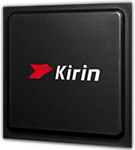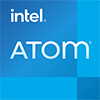
Intel Celeron N4100 Benchmark, test e specifiche
Ultimo aggiornamento:
Intel Celeron N4100 è un core processor 4. Può gestire 4 thread contemporaneamente ed è stato introdotto il Q4/2017. Si basa sul 9. Gen della serie Intel Celeron e richiede una scheda madre con il socket BGA 1090. Intel Celeron N4100 ottiene 394 punti con un core CPU nel benchmark Geekbench 5. Quando si utilizzano tutti i core della CPU, il risultato è 1.385 punti.

| Cognome: | Intel Celeron N4100 |
|---|---|
| Famiglia: | Intel Celeron (165) |
| Gruppo CPU: | Intel Celeron J4000/N4000/N5000 (11) |
| Architettura : | Gemini Lake |
| Segmento: | Mobile |
| Generazione: | 9 |
| Predecessore: | -- |
| Successore: | Intel Celeron N5100 |
CPU Cores e frequenza di base
I 4 core della CPU del Intel Celeron N4100 clock con 1,10 GHz (2,40 GHz). Il numero di core della CPU e la frequenza di clock del processore sono in gran parte responsabili delle prestazioni complessive.
| CPU Cores / Threads: | 4 / 4 |
|---|---|
| Architettura principale: | normal |
| Cores: | 4x |
| Hyperthreading / SMT: | No |
|---|---|
| Overclocking: | No |
| Frequenza: | 1,10 GHz |
| Turbo Frequenza (1 Core ): | 2,40 GHz |
| Turbo Frequenza (4 Cores): | 2,40 GHz |
Grafica interna
Con Intel UHD Graphics 600, Intel Celeron N4100 ha una grafica integrata. Questo ha 12 processori SM, che hanno un totale di 96 texture shader. L'iGPU non solo abilita i giochi, ma accelera anche in modo significativo la riproduzione di video, ad esempio.
| nome GPU: | Intel UHD Graphics 600 |
|---|---|
| Frequenza GPU : | 0,20 GHz |
| GPU (Turbo ): | 0,70 GHz |
| Unità di esecuzione: | 12 |
| Shader: | 96 |
| Hardware Raytracing: | No |
| Data di lancio : | Q4/2017 |
| Max. visualizzazioni: | 3 |
|---|---|
| Generation: | 9.5 |
| Direct X: | 12 |
| Tecnologia : | 14 nm |
| Max. GPU Memoria: | 8 GB |
| Frame Generation: | No |
Hardware codec support
I processori con grafica integrata possono elaborare e riprodurre video in modo più rapido ed efficiente. Ciò può avere un effetto positivo sulla durata della batteria dei notebook, ad esempio.
| h265 / HEVC (8 bit): | Decodificare / Codificare |
|---|---|
| h265 / HEVC (10 bit): | Decodificare / Codificare |
| h264: | Decodificare / Codificare |
| VP8: | Decodificare / Codificare |
| VP9: | Decodificare / Codificare |
| AV1: | No |
|---|---|
| AVC: | Decodificare / Codificare |
| VC-1: | Decodificare |
| JPEG: | Decodificare / Codificare |
Memoria & PCIeIntel Celeron N4100 supporta fino a 8 GB memoria in un massimo di 2 (Dual Channel) canali di memoria. Ciò si traduce in una larghezza di banda di memoria massima di 38,4 GB/s. |
|
| Tipo di memoria : | Banda di memoria: |
|---|---|
| LPDDR4-2400 DDR4-2400 | 38,4 GB/s 38,4 GB/s |
| Max. Memoria: | 8 GB |
| Canali di memoria : | 2 (Dual Channel) |
| ECC: | No |
| PCIe: | 2.0 x 6 |
| PCIe Larghezza di banda: | 3,0 GB/s |
Gestione termicaCon il TDP, il produttore del processore specifica la soluzione di raffreddamento necessaria per il processore. Intel Celeron N4100 ha un TDP di 6 W. |
|
|---|---|
| TDP (PL1 / PBP): | 6 W |
| TDP (PL2): | -- |
| TDP up: | -- |
| TDP down: | 4.8 W |
| Tjunction max.: | 105 °C |
Dettagli tecnici
Intel Celeron N4100 ha una cache grande 4,00 MB. Il processore è prodotto in %%Manufacturing%%. La produzione moderna aumenta l'efficienza del processore.
| Tecnologia : | 14 nm |
|---|---|
| Design a chip: | Monolitico |
| Presa: | BGA 1090 |
| L2-Cache: | -- |
| L3-Cache: | 4,00 MB |
| AES-NI: | Si |
| Sistemi operativi: | Windows 10, Windows 11, Linux |
| Virtualizzazione: | VT-x, VT-x EPT, VT-d |
|---|---|
| Set di istruzioni (ISA): | x86-64 (64 bit) |
| Estensioni ISA: | SSE4.1, SSE4.2 |
| Data di lancio : | Q4/2017 |
| Prezzo di rilascio: | -- |
| Numero di parte: | -- |
| Documenti: | Scheda tecnica |
Valuta questo processore
Risultati di benchmark

I risultati del benchmark per Intel Celeron N4100 sono stati attentamente controllati da noi. Pubblichiamo solo risultati di benchmark che sono stati creati da noi o che sono stati inviati da un visitatore e poi controllati da un membro del team. Tutti i risultati sono basati e rispettano le nostre linee guida di benchmark.
Schermate:
Schermate:
- Cinebench R20 on Zotac ZBOX CI329 nano (8GB DDR4-2400), Windows 10
- Cinebench R15 on Zotac ZBOX CI329 nano (8GB DDR4-2400), Windows 10
- AIDA64 Cache & Memory Benchmark on Zotac ZBOX CI329 nano (8GB DDR4-2400), Windows 10
- AIDA64 CPUID on Zotac ZBOX CI329 nano (8GB DDR4-2400), Windows 10
- AIDA64 iGPU Benchmark on Zotac ZBOX CI329 nano (8GB DDR4-2400), Windows 10
Geekbench 5, 64bit (Single-Core)
Geekbench 5 è un benchmark multi-piattaforma che usa in modo intensivo la memoria del sistema.Il test single-core utilizza solo un nucleo elaborativo della CPU. A tal fine, il numero di nuclei elaborativi o la capacità di hyperthreading non sono rilevanti.
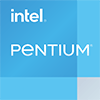
|
Intel Pentium E6300
2C 2T @ 2,80 GHz |
||

|
AMD Athlon II X3 455
3C 3T @ 3,30 GHz |
||

|
Intel Pentium E5500
2C 2T @ 2,80 GHz |
||
|
|
Intel Celeron N4100
4C 4T @ 2,40 GHz |
||

|
AMD Athlon II X2 250e
2C 2T @ 3,00 GHz |
||

|
Intel Celeron 3215U
2C 2T @ 1,70 GHz |
||

|
Intel Celeron 3755U
2C 2T @ 1,70 GHz |
||
Geekbench 5, 64bit (Multi-Core)
Geekbench 5 è un benchmark multi-piattaforma che usa in modo intensivo la memoria del sistema.Il test multi-core coinvolge tutti i nuclei elaborativi della CPU e si avvale del hyperthreading.

|
Intel Core m3-7Y30
2C 4T @ 2,00 GHz |
||

|
Intel Pentium D1508
2C 4T @ 2,60 GHz |
||

|
Intel Celeron G4900T
2C 2T @ 2,80 GHz |
||
|
|
Intel Celeron N4100
4C 4T @ 2,40 GHz |
||
|
|
HiSilicon Kirin 710
8C 8T @ 2,20 GHz |
||

|
Intel Core i3-4100M
2C 4T @ 2,50 GHz |
||

|
Intel Core i5-5250U
2C 4T @ 2,50 GHz |
||
Geekbench 6 (Single-Core)
Geekbench 6 è un punto di riferimento per computer, notebook e smartphone moderni. Ciò che è nuovo è un utilizzo ottimizzato delle architetture CPU più recenti, ad esempio basate sul concetto big.LITTLE e combinando core CPU di diverse dimensioni. Il benchmark single-core valuta solo le prestazioni del core della CPU più veloce, il numero di core della CPU in un processore è irrilevante qui.

|
Intel Celeron 1005M
2C 2T @ 1,90 GHz |
||

|
Intel Pentium J4205
4C 4T @ 2,60 GHz |
||

|
MediaTek MT8176
6C 6T @ 2,00 GHz |
||
|
|
Intel Celeron N4100
4C 4T @ 2,40 GHz |
||

|
Intel Celeron 3215U
2C 2T @ 1,70 GHz |
||

|
Intel Celeron 3755U
2C 2T @ 1,70 GHz |
||

|
Qualcomm Snapdragon 665
8C 8T @ 2,00 GHz |
||
Geekbench 6 (Multi-Core)
Geekbench 6 è un punto di riferimento per computer, notebook e smartphone moderni. Ciò che è nuovo è un utilizzo ottimizzato delle architetture CPU più recenti, ad esempio basate sul concetto big.LITTLE e combinando core CPU di diverse dimensioni. Il benchmark multi-core valuta le prestazioni di tutti i core della CPU del processore. I miglioramenti del thread virtuale come AMD SMT o l'Hyper-Threading di Intel hanno un impatto positivo sul risultato del benchmark.

|
Intel Core i5-2450M
2C 4T @ 2,50 GHz |
||

|
Intel Core i5-2510E
2C 4T @ 2,50 GHz |
||

|
Intel Core i5-2515E
2C 4T @ 2,50 GHz |
||
|
|
Intel Celeron N4100
4C 4T @ 2,40 GHz |
||
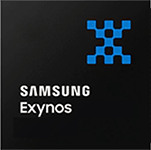
|
Samsung Exynos 8890
8C 8T @ 2,60 GHz |
||

|
Intel Core i7-3517U
2C 4T @ 2,50 GHz |
||

|
Intel Core i5-4202Y
2C 4T @ 1,60 GHz |
||
Cinebench R20 (Single-Core)
Cinebench R20 è il successore di Cinebench R15 ed è anch'esso basato su Cinema 4D. Cinema 4D è un software usato a livello mondiale per creare forme in 3D. Il test single-core utilizza solo un nucleo elaborativo della CPU. A tal fine, il numero di nuclei elaborativi o la capacità di hyperthreading non sono rilevanti.

|
Intel Core m5-6Y57
2C 4T @ 2,80 GHz |
||

|
AMD Athlon II X4 645
4C 4T @ 3,10 GHz |
||

|
Intel Core i3-4005U
2C 4T @ 1,70 GHz |
||
|
|
Intel Celeron N4100
4C 4T @ 2,40 GHz |
||

|
AMD Athlon II X4 640
4C 4T @ 3,00 GHz |
||
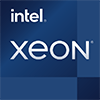
|
Intel Xeon E7-8870 v2
15C 30T @ 2,90 GHz |
||

|
AMD Athlon II X4 635
4C 4T @ 2,90 GHz |
||
Cinebench R20 (Multi-Core)
Cinebench R20 è il successore di Cinebench R15 ed è anch'esso basato su Cinema 4D. Cinema 4D è un software usato a livello mondiale per creare forme in 3D. Il test multi-core coinvolge tutti i nuclei elaborativi della CPU e si avvale del hyperthreading.

|
Intel Core m3-8100Y
2C 4T @ 1,10 GHz |
||

|
Intel Celeron N4120
4C 4T @ 2,50 GHz |
||

|
Intel Core i3-4005U
2C 4T @ 1,70 GHz |
||
|
|
Intel Celeron N4100
4C 4T @ 2,40 GHz |
||

|
Intel Core i7-4510U
2C 4T @ 2,70 GHz |
||

|
Intel Core i3-2330M
2C 4T @ 2,20 GHz |
||

|
Intel Core M-5Y10c
2C 4T @ 1,60 GHz |
||
iGPU - Prestazioni FP32 (GFLOPS a precisione singola)
Le prestazioni di calcolo teoriche dell'unità grafica interna del processore con precisione semplice (32 bit) in GFLOPS. GFLOPS indica quanti miliardi di operazioni in virgola mobile che l'iPPU può eseguire al secondo.

|
Intel Celeron 2961Y
Intel HD Graphics (Haswell GT1) @ 0,85 GHz |
||

|
Intel Pentium 3560Y
Intel HD Graphics (Haswell GT1) @ 0,85 GHz |
||

|
Intel Pentium 3561Y
Intel HD Graphics (Haswell GT1) @ 0,85 GHz |
||
|
|
Intel Celeron N4100
Intel UHD Graphics 600 @ 0,70 GHz |
||

|
Intel Celeron J3355E
Intel HD Graphics 500 @ 0,70 GHz |
||

|
Intel Celeron J3455E
Intel HD Graphics 500 @ 0,70 GHz |
||

|
Intel Celeron J4115
Intel UHD Graphics 600 @ 0,70 GHz |
||
Risultati stimati da PassMark CPU Mark
Alcune delle CPU elencate di seguito sono stati sottoposti a benchmarking da CPU-monkey. Tuttavia, la maggior parte delle CPU non sono state testate e i risultati sono stati stimati utilizzando una formula segreta di proprietà di CPU-monkey. Come tali, essi non riflettono con precisione i valori attuali di Passmark CPU Mark e non sono stati approvati da PAssMark Software Pty Ltd.

|
Intel Core i5-4360U
2C 4T @ 2,90 GHz |
||

|
Qualcomm Snapdragon 712
8C 8T @ 2,30 GHz |
||

|
Intel Core i7-4610Y
2C 4T @ 1,70 GHz |
||
|
|
Intel Celeron N4100
4C 4T @ 2,40 GHz |
||

|
Intel Celeron G4920
2C 2T @ 3,20 GHz |
||
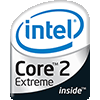
|
Intel Core 2 Extreme QX9650
4C 4T @ 3,00 GHz |
||

|
AMD A6-6310
4C 4T @ 2,40 GHz |
||
CPU-Z Benchmark 17 (Multi-Core)
Il benchmark CPU-Z misura le prestazioni di un processore misurando il tempo impiegato dal sistema per completare tutti i calcoli del benchmark. Più velocemente viene completato il benchmark, maggiore è il punteggio.
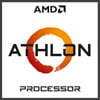
|
AMD Athlon Silver 3050U
2C 2T @ 2,30 GHz |
||

|
Intel Pentium Gold 5405U
2C 4T @ 2,30 GHz |
||

|
AMD A8-7650K
4C 4T @ 3,30 GHz |
||
|
|
Intel Celeron N4100
4C 4T @ 1,10 GHz |
||

|
Intel Celeron G4900
2C 2T @ 3,10 GHz |
||

|
Intel Core i3-530
2C 4T @ 2,93 GHz |
||

|
Intel Core i5-2430M
2C 4T @ 2,40 GHz |
||
Cinebench R15 (Single-Core)
Cinebench R15 è il successore di Cinebench 11.5 ed è anch'esso basato su Cinema 4D. Cinema 4D è un software usato a livello mondiale per creare forme in 3D. Il test single-core utilizza solo un nucleo elaborativo della CPU. A tal fine, il numero di nuclei elaborativi o la capacità di hyperthreading non sono rilevanti.

|
Intel Core i3-4100U
2C 4T @ 1,80 GHz |
||

|
AMD A10-9600P
4C 4T @ 3,30 GHz |
||

|
AMD A12-9700P
4C 4T @ 3,40 GHz |
||
|
|
Intel Celeron N4100
4C 4T @ 2,40 GHz |
||

|
Intel Celeron 3867U
2C 2T @ 1,80 GHz |
||

|
AMD Athlon II X4 640
4C 4T @ 3,00 GHz |
||

|
Intel Core i5-3339Y
2C 4T @ 2,00 GHz |
||
Cinebench R15 (Multi-Core)
Cinebench R15 è il successore di Cinebench 11.5 ed è anch'esso basato su Cinema 4D. Cinema 4D è un software usato a livello mondiale per creare forme in 3D. Il test multi-core coinvolge tutti i nuclei elaborativi della CPU e si avvale del hyperthreading.

|
AMD A10-4657M
4C 4T @ 3,20 GHz |
||

|
Intel Celeron G1820
2C 2T @ 2,70 GHz |
||

|
AMD Phenom II X3 705e
3C 3T @ 2,50 GHz |
||
|
|
Intel Celeron N4100
4C 4T @ 2,40 GHz |
||

|
Intel Pentium G2010
2C 2T @ 2,80 GHz |
||

|
Intel Core M-5Y31
2C 4T @ 1,80 GHz |
||

|
Intel Celeron G1630
2C 2T @ 2,80 GHz |
||
Benchmarks

Geekbench 5 (SC)
2.488 inserimenti
2.488 inserimenti

Geekbench 5 (MC)
2.461 inserimenti
2.461 inserimenti

Geekbench 6 (SC)
1.755 inserimenti
1.755 inserimenti

Geekbench 6 (MC)
1.703 inserimenti
1.703 inserimenti

Cinebench R20 (SC)
656 inserimenti
656 inserimenti

Cinebench R20 (MC)
604 inserimenti
604 inserimenti

FP32 SP (iGPU)
2.039 inserimenti
2.039 inserimenti
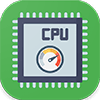
PassMark CPU-Mark
2.392 inserimenti
2.392 inserimenti

CPU-Z Benchmark 17 (MC)
733 inserimenti
733 inserimenti

Cinebench R15 (SC)
1.106 inserimenti
1.106 inserimenti

Cinebench R15 (MC)
1.101 inserimenti
1.101 inserimenti

Geekbench 3 (SC)
942 inserimenti
942 inserimenti

Geekbench 3 (MC)
938 inserimenti
938 inserimenti
Descrizione del processore
LIntel Celeron N4100 è molto economico con il suo TDP di soli 6 watt, ma non un processore abbastanza così potente. È usato in notebook molto favorevoli (ad esempio, lAcer Chromebook 314 o il Lenovo Chromebook 55e), in poche tablet (ad esempio, il tablet Lenovo 10) e in vari mini pz (ad esempio, il mini PC ASUS PN40- BC100MC o ZOTAC ZBOX CI329 NANO).Il processore ha 4 nuclei fisici, che, tuttavia, non supporta iperthreading, né sono overclockabili. I core di base del processore dellorologio sono 1.10 Gigahertz. In Turbomodu, il ciclo è aumentato fino a 2,40 Gigahertz, mentre non importa se solo uno o uguale a tutti e 4 i core sono utilizzati.
Come oggi in quasi tutti i processori di consumo, ununità grafica è anche integrata nel Intel Celeron N4100. Questa è la "grafica Intel UHD 600" originata dalla 10 generazione dei processori grafici Intel. Questo orologio in modalità standard con un massimo di 200 megahertz e in turbomodo con fino a 700 megahertz. La GPU dotata di 12 unità di esecuzione supporta DirectX versione 12 e luscita dellimmagine su un massimo di 3 monitor in parallelo.
Poiché lunità grafica supporta la decodifica di tutti i codec video importanti in hardware, il processore è ideale per la creazione di un PC dei supporti a risparmio energetico. Ad esempio, la suddetta Zotac Zbox CI329 può essere idealmente utilizzata.
Intel Celeron N4100 ha un totale di 2 canali di memoria e supporta la memoria DDR4 e LPDDR4, ciascuno con un massimo di 2400 megahertz. I 4 megabyte della cache L3 accelerano la trasmissione dei dati tra memoria e processore.
Il processore è stato lanciato nel quarto trimestre del 2017 ed è basato sullarchitettura "Gemini Lake". LIntel Celeron N4100 è fabbricato nel processo di 14 nanometro.
Confronti più popolari
Torna all'indice



